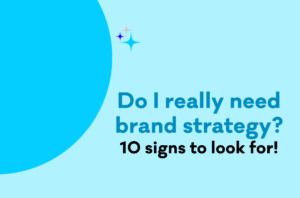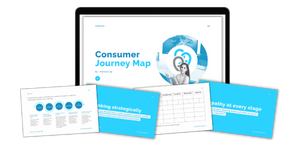Great brand messaging is difficult to define but easy to see.
Brands that get it right benefit from higher revenue, greater customer loyalty and better brand recall.
But what is brand messaging?
It’s more than what you say and where you say it.
Effective brand messaging rolls the who, what, where, when and (most importantly) why into concise, well-written copy.
It starts with a solid brand strategy and focuses on motivating your audience.
And the steps you take in between strategy and delivery are crucial to creating brand messaging that converts.
Step 1: Define your brand
Brand messaging communicates your company’s mission, vision, values and positioning.
So the first step is to “know thyself”, as the Ancient Greeks would say.
- Are the mission, vision and values clear?
- What are the company’s long-term objectives?
- How is your company different from the competition?
- What is your unique value proposition?
- Who is your target audience?
If the answers to these and other big brand questions are unclear, step back and focus on building a brand strategy.
A brand’s strategy is the “north star” that guides decision-making.
We recently published a helpful guide to creating a brand strategy that helps your brand stand out. You can find it here.
Step 2: Understand your audience
Now you know yourself, it’s time to learn everything you can about your current and potential customers.
- What do they care about?
- What are their pain points? Desires? Motivations?
- Where do they find information?
- How will you reach them there?
Customer personas are a valuable tool to illustrate the answers to these questions and many more in a concise, easily understood document.
We use customer personas to help our clients understand the humans on the other end of every brand message.
Step 3: Document your decisions
The purest form of brand messaging exists at the intersection point where customers, business goals and company values meet.
By comparing the brand identity (step 1) with the audience personas (step 2), you can see where the two halves of the story come together.
Document the decisions you make about brand messaging, including:
- Tone of voice
- Word usage
- Formality
- Communicating with/about competitors
- Positioning on social issues
- One-to-one communication (e.g. social media messaging)
- One-to-many communication (e.g. website copy, blogs, social media feed posts)
- Tagline
Every piece of content you create, from blogs to social media posts and print collateral, should directly link back to the brand messaging guide.
It also becomes invaluable as your company grows and new employees join the team.
Check in regularly: brand messaging guides should be living documents that expand and evolve whenever your brand messaging develops in a meaningful way.
Step 4: Test, refine, learn
Armed with a clear brand strategy, deep audience insight and a well-documented brand messaging guide, you can start to test your ideas with customers.
Keep track of what works (and what doesn’t).
Consistent brand messaging is the key to building a loyal following, but you should regularly experiment to find the best expression of your brand.
Running multivariate tests with random audience segments is a great place to start.
Then once you know what your audience generally responds to, start segmenting deliberately to determine your customer categories.
Each data point is an opportunity to learn about your audience, refine brand messaging and create content that converts.
Brand strategy that cuts through the noise
If you’re struggling to reach customers or eager to enter a new growth phase, Platinum 99 can help.
Our branding and identity design services help our clients get noticed, build a following and convert more customers.
Get in touch to discuss your requirements with a brand messaging specialist today.














